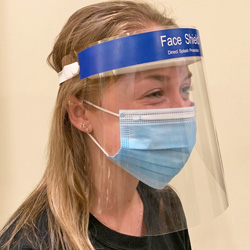In a conversation with a colleague today, I was thinking of examples of lab situations in which lab workers "naturally" (i.e. without prompting from EHS offices) developed alternatives to the use of risky chemicals. Examples I came up with included
the decrease of the routine use of benzene and Chromerge to wash glassware; and the development of nitric acid based microwave systems to replace boiling perchloric acid baths.
I wonder if there are other examples of such natural transitions that others on DCHAS-L can identify?
Thanks for any help with this.
- Ralph
Ralph Stuart, CIH, CCHO
Environmental Safety Manager
Keene State College
603 358-2859
ralph.stuart**At_Symbol_Here**keene.edu
---
For more information about the DCHAS-L e-mail list, contact the Divisional secretary at secretary**At_Symbol_Here**dchas.org
Follow us on Twitter **At_Symbol_Here**acsdchas
